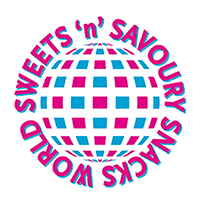Festive indulgence

With the festive season firmly upon us, I’m already thinking about the sweet treats I’ll be gauging on over the Christmas break. One will certainly be chocolate.
You could argue that this year has been the year for “breakthrough” chocolate innovations. From a chocolate filling fat that reduces saturated fatty acid (SAFA) content by 30% while maintaining texture stability and a cool-melting effect, to the development of a fourth type of chocolate, manufacturers should to be applauded for keeping pace with ever-changing consumer demands for new product concepts.
Barry Callebaut developed ruby chocolate, a naturally reddish, fruity-tasting product described as “the fourth type of chocolate”. Made from ruby cocoa beans sourced in different regions of the world, it was launched in China in September. It is said to have an “intense taste”, but not of chocolate, or at least not the “chocolate” that consumers associate with that word.
While Marcia Mogelonsky, director of insight for food and drink at Mintel, believes ruby chocolate is a product with a guaranteed audience: millennials, she questions whether the fruit-flavoured chocolate will be as popular as milk and dark varieties.
Perhaps because some consumers consider it not to be “real” chocolate, white chocolate has not gained much traction in Europe, she says. Only 16% of French chocolate eaters look for white chocolate, for example, and chocolate eaters in Germany, Italy, Spain and Poland only show a little more interest, with less than a quarter in each market eating white chocolate. While there has been some innovation around the product, and while white chocolate has figured in a number of other categories, Mogelonsky says the product is not as popular as milk or dark chocolate.
However, ruby chocolate’s distinctive colour and flavour will help it stand out from white chocolate, she notes. If consumers can be persuaded that it is derived naturally from cocoa beans, ruby may surpass white as a preferred alternative to dark or milk.
According to Mintel’s Global New Products Database, since 2016, the top flavour for chocolate confectionery has been plain/unflavoured, with strawberry and raspberry accounting only for 2% and 1% of launches respectively, showing the extent to which fruit-flavoured chocolate is not especially popular.
Mogelonsky believes that while ruby may have an advantage, with little competition from other fruit-forward chocolates, consumers who consider chocolate flavour to be part of the equation are likely to be disappointed by its absence.
We will have to wait and see whether ruby chocolate takes the industry by storm next year.
I’d like to take this opportunity to wish all our readers a very merry Christmas, and of course, enjoy over-indulging.



